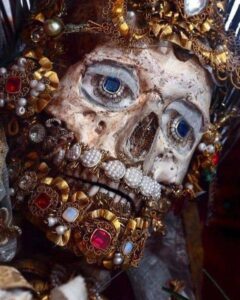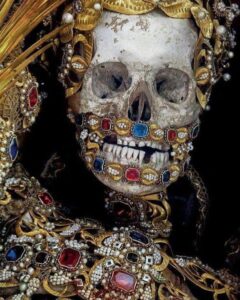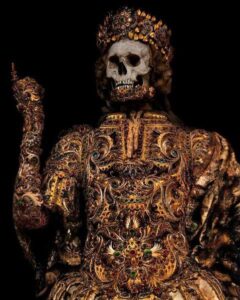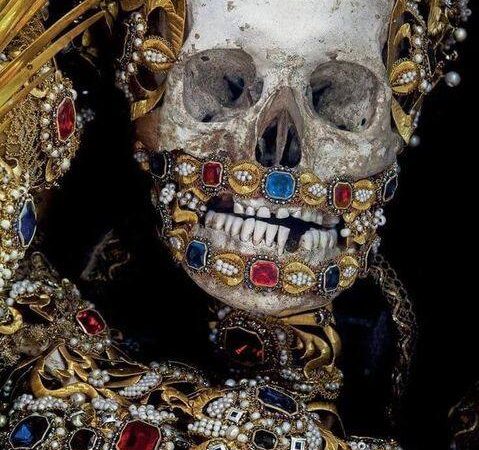
The discovery of the catacombs in 1578 marked a significant moment in Christian history. Buried beneath Rome, these underground tombs contained the remains of thousands of early Christian martyrs. The discovery revealed a hidden world where believers sought refuge and commemorated their dead during times of persecution. The bodies unearthed were believed to be those of saints, figures who had paid the ultimate price for their beliefs. Their discovery rekindled a deep spiritual fervor across Europe.


After their discovery, the skeletons were sent across Catholic Europe, where they became known as the “Catacomb Saints.” This distribution was partly a reaction to the Protestant Reformation, during which many Catholic relics and icons were destroyed or desecrated. The Church sought to replace these lost treasures with what they considered genuine relics, and the Catacomb Saints were ideal for this purpose. These bones were seen not just as relics but as sacred objects that could inspire faith and devotion, standing as a stark contrast to the iconoclasm of the Protestant reformers.

The transformation of these skeletal remains into objects of veneration involved an extraordinary effort of art and craftsmanship. Local nuns and monks, skilled in the art of reliquary, adorned the bones with lavish decorations. The skeletons were meticulously reassembled, often using wires and wax to hold them together. They were then dressed in elaborate garments made from gold, silver, and silk, and covered with precious stones, pearls, and other jewels. This intricate decoration was not only an act of piety but also a demonstration of the wealth and power of the Catholic Church during this period.


These richly decorated skeletons served multiple purposes within their new ecclesiastical homes. For the faithful, they were both a reminder of the divine and a tangible connection to the holy. The Catacomb Saints were often displayed in glass cases or shrines, positioned in such a way that their elaborate costumes and jeweled decorations could be fully appreciated by worshippers. Pilgrims would travel great distances to see these relics, believing that they had the power to perform miracles and offer protection. The Church used these saints to reinforce Catholic doctrine and to assert the continuity and authority of its traditions in the face of Protestant challenge.

The beauty and artistry of these relics often overshadowed the fact that they were human remains. The embellishments were so opulent that they could easily be mistaken for ornate sculptures or works of art rather than actual bones. Each skeleton was given a distinct personality and identity, often being named after existing saints or martyrs. This personalization helped to create a sense of intimacy and immediacy for the believers, making the distant past of Christian martyrdom feel present and accessible. The relics thus became a focal point for devotion, bridging the gap between the earthly and the divine.


Despite their initial popularity, the veneration of the Catacomb Saints eventually waned. As the Enlightenment swept across Europe, attitudes towards such relics began to change. The age of reason brought skepticism towards the authenticity and purpose of the relics. Many questioned whether the bones truly belonged to martyrs or if they were simply remains of unknown individuals whose stories had been lost to time. By the 19th century, many of these relics were removed from public view, hidden away in church crypts or forgotten altogether, as the Church sought to modernize and distance itself from what some perceived as superstitious practices.

Today, the Catacomb Saints stand as a testament to a particular era of religious fervor and artistic expression. Photographs by artists like Paul Koudounaris have brought renewed interest to these relics, highlighting their unique beauty and historical significance. While they may no longer serve their original religious purpose, they continue to fascinate as cultural and artistic artifacts, offering a glimpse into a time when faith, art, and death were inextricably intertwined.
Post Views: 130






